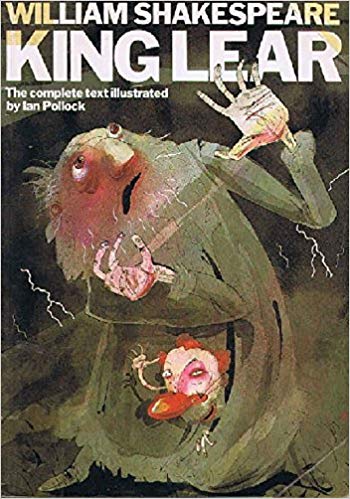By HLTD51 student FC
As I was reflecting on Margaret Gullette’s essay “The Other End of the Fashion Cycle: Practicing Loss, Learning Decline”, in Woodward’s collection Figuring Age: Women, Bodies, Generations, I can recall in the past watching an episode of an old television show called “What Not To Wear” (note: I rarely watch television so this must have been forced upon me somehow). The show involves two television hosts, Stacy London and Clinton Kell, who bestow their fashion knowledge onto individuals that enjoyed expressing themselves through what they wore, often their sense of style rejected and replaced with something ‘new’. I distinctly remember one lady proudly wearing garments that–supposedly–“didn’t represent her age”, as she was described as dressing too youthfully for her time (see image on the right). The two hosts then gave her a makeover where she wore a pencil skirt and blazer that gave her a “business casual” look, one that showed, through fashion, that she was a working middle-aged woman.

*
Gullette’s essay suggests that our current capitalist systems and the culture we inhibit constantly shape how we as individuals experience the aging process. She suggests that how we treat our objects and belongings conditions us to think in a particular way when we treat aging individuals (Gullette, 1999). In addition, Gullette’s writing challenges the reader in thinking about what shapes our identity and personhood. This can be thinking about how the garment can give the wearer social mobility or can highlight social class. She mentions how not wearing age appropriate clothing or wearing outdated clothes agesan individual as mentioned in my previous reflection above (Gullette, 1999). Equally the “cultural hat” we put on (I.e. media and literature) also plays a part in aging us (Gullette, 1999). We learn about the aging cycle at a young age through the consumer culture and we are perpetually reminded about this cycle through our daily interactions with the world around us.
Immediately I was brought back to another Health Humanities class, HLTC50: Human-Animal Interface, and the theory of social contagion. In Dr. Charise’s lecture, she described how “social contagion” describes how attitudes, beliefs and behaviour can spread throughout populations as if they were literally contagious. The contagion that is evident in our society and highlighted within Gullette’s critical essay (and even in the artistic work “King Lear”). We are in the constant cycle of discarding the old and the outdated or perhaps the ‘old’ parts of ourselves when we age (i.e. baby clothes that no longer fit, toys etc.). With our conditioned way of how we view processes (such as aging) in cyclical ways we subconsciously objectify human bodies and begin to see the body as dispensable when the body declines to older age.
I argue that there is a direct connection with the overarching themes of Gullette’s critical essay (cycle of aging, i.e. youth to old and being discarded) to Ian Pollock’s illustrated version of King Lear. Throughout the entire play, the audience takes a journey through King Lear’s experience of aging while his daughters Goneril and Regan seek to discard him. As a side narrative, the audience also witnesses Edmund’s attempts at physically taking part (through the plucking of his eyes in Act III, Scene VII) and discarding his aging father Gloucester. I want to suggest that King Lear in Ian Pollock’s illustrated version is also in the cycle of discarding parts of his youth specifically with the disappearance of fool and the death of his daughter Cordelia that act as metaphors for this
 The main illustration used for the cover of the play (see right) is also found in Act III, Scene II where King Lear finds himself in a storm with Kent, Poor Tom and the Fool. In this Act, King Lear strips himself of garments and is left vulnerable. This stripping of his clothing can be seen as him stripping himself of his personhood. I want to further argue that in this illustration and the disappearance of the fool in Act II, Scene VI can signify that potentially the fool was symbolic for King Lear’s youthful self. The fool showed random sparks of wisdom, but also spoke honestly with glimmers of innocence as a child does (i.e. King Lear referred to as nuncle). After the scenes where King Lear spirals into madness and strips himself of his clothes and potential youth and personhood, the fool disappears.
The main illustration used for the cover of the play (see right) is also found in Act III, Scene II where King Lear finds himself in a storm with Kent, Poor Tom and the Fool. In this Act, King Lear strips himself of garments and is left vulnerable. This stripping of his clothing can be seen as him stripping himself of his personhood. I want to further argue that in this illustration and the disappearance of the fool in Act II, Scene VI can signify that potentially the fool was symbolic for King Lear’s youthful self. The fool showed random sparks of wisdom, but also spoke honestly with glimmers of innocence as a child does (i.e. King Lear referred to as nuncle). After the scenes where King Lear spirals into madness and strips himself of his clothes and potential youth and personhood, the fool disappears.
In conclusion, examining King Lear in light of Margaret Gullette’s essay enables us to think about the aging cycle, the stripping of identity and taking on new narratives from a different perspective. Gullette encourages the readership to consider in which ways we are able to practice and come to terms with our own aging. This can be done through looking at the arts, ready with multiple different lenses.
References
Gullette, M. (1999). “The Other End of the Fashion Cycle: Practicing Loss, Learning Decline” in Woodward. Figuring Age: Women, Bodies, Generations (Indiana: Indiana University Press. pp. 34-55.